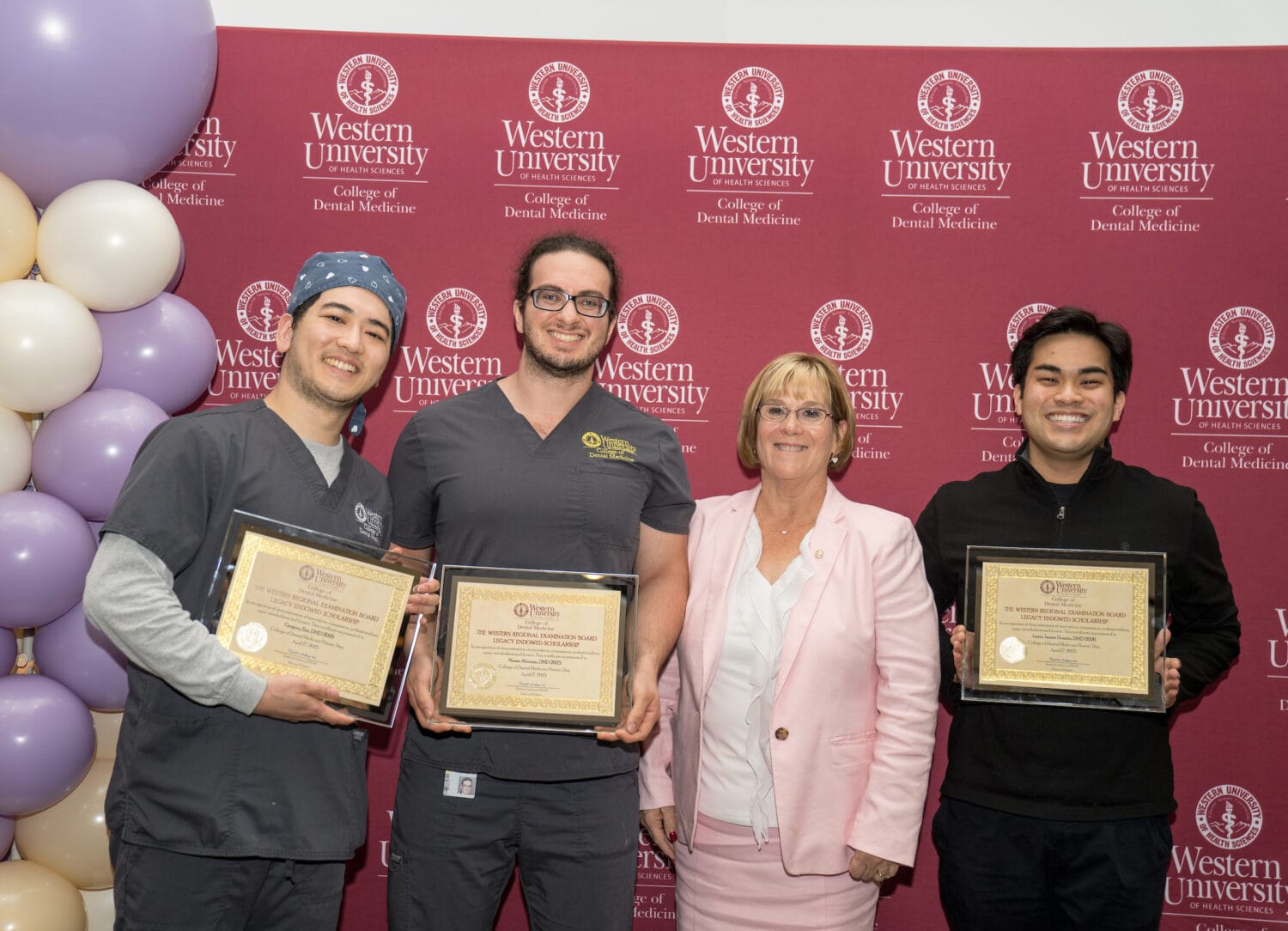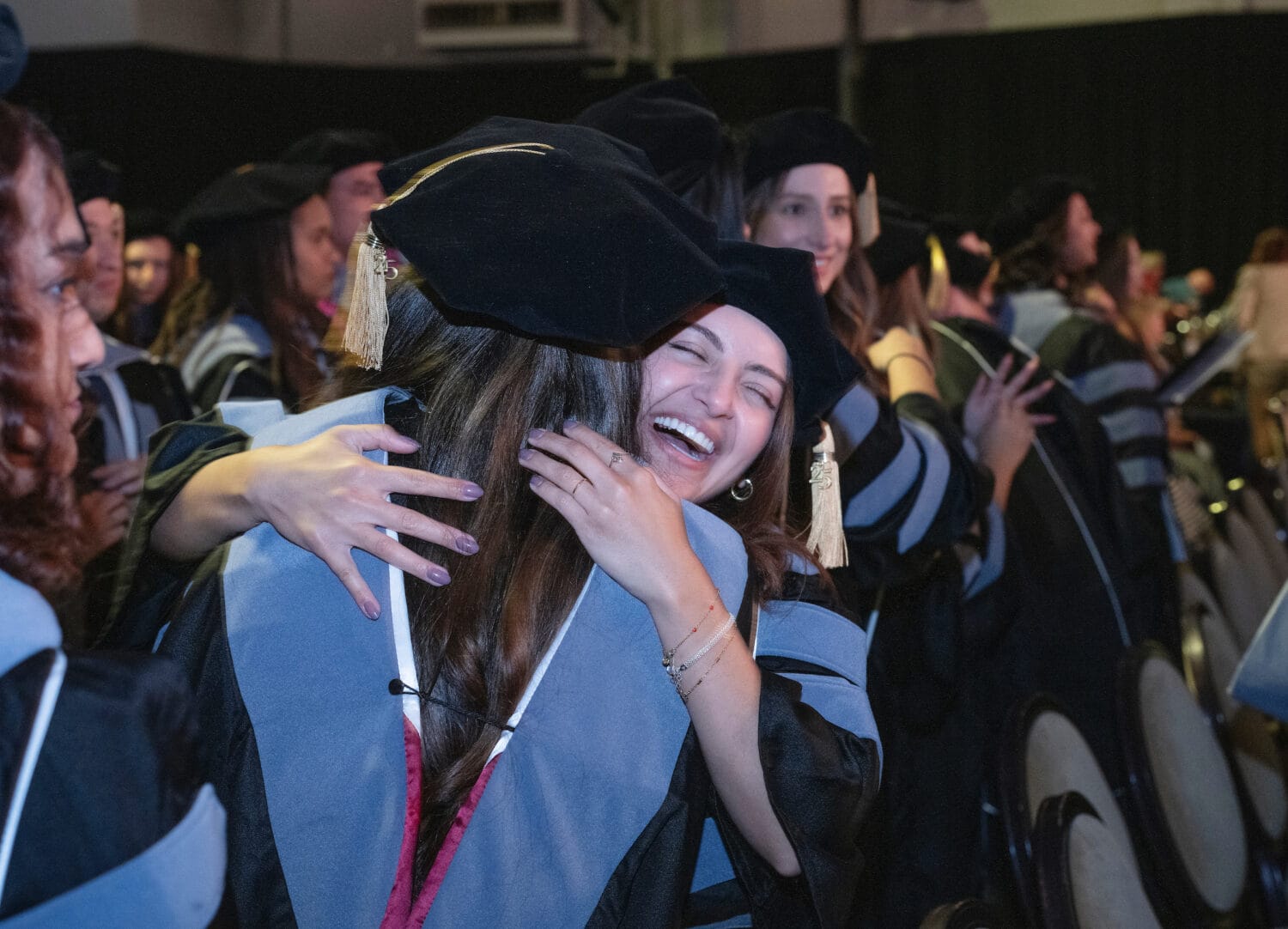WesternU College of Veterinary Medicine holds laparoscopy training courses

The College of Veterinary Medicine (CVM) at Western University of Health Sciences recently held multiple laparoscopy training courses for fourth-year students and practicing veterinarians. CVM is unique among veterinary schools in offering laparoscopy training to fourth-years.
CVM held two sessions, on May 9-12 and May 16-19, 2019, for 17 fourth-year CVM students. The students participated in lectures and gave presentations on laparoscopy surgery techniques and procedures. They trained on simulators and were tested on their knowledge and skills. They then performed a laparoscopic spay on live dogs to close the session. In keeping with CVM’s “reverence for life” philosophy, the patients were shelter dogs who were returned to local shelters for adoption.
CVM held a Continuing Education course for clinicians June 1-2, 2019. Some of the veterinarians brought their veterinary technicians, who learned how to prepare, clean and sterilize the specialized equipment and assist in laparoscopic surgery. CVM is one of only a few institutions in North America offering this training.
Minimally-invasive surgery utilizes very small incisions – 5 to 10 millimeters – so the patient experiences less trauma and pain, and fewer potential complications from the incision. The veterinarian performs the surgery using a special camera (laparoscope) that sends images to a large TV monitor.
“Because it’s a very small incision, the recovery and return to normal activity is much faster,” said CVM Professor Ohad Levi, DVM, who led the training sessions. “Hospitalization time is much shorter.”
CVM’s laparoscopy training is supported by evidence-based research. Levi and his colleagues have conducted research projects and published results in peer-reviewed journals, showing that students can be taught this specific and advanced surgery technique, that cost-efficient simulators work, and that there is a correlation between playing video games and acquiring basic laparoscopic techniques more quickly.
“In people, laparoscopy is the gold standard – 90 percent of surgeries are done by laparoscopy,” Levi said. “In veterinary medicine, it’s getting more and more popular. From 2009 on, it’s become mandatory for residency programs for surgery specialization.”
A dog could recover and go home from laparoscopy surgery within two to four hours rather than spending long hours or even overnight recovering in the hospital. They can run and jump and return to normal within two to three days rather than one to two weeks. Perhaps most important, the animals have much less pain.
“There is an increasing demand from the public. More clients ask for it,” Levi said. “We are not far away from a day when it becomes the standard of care for veterinary medicine.”
CVM’s laparoscopy courses are supported by Karl Storz – Endoskope and Medtronic.



